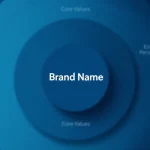Kinetic Energy Calculator
Is this tool helpful?
How to use the tool
Turn mass and velocity into kinetic energy in three quick steps:
- Mass (kg): enter the object’s mass, e.g., 50 or 2000.
- Velocity (m/s): enter its speed, e.g., 5.3 or 30.
- Press “Calculate” to see the result in joules.
Formula inside the calculator
The computation follows
$$KE = rac{1}{2} m v^{2}$$
Worked examples
- Bicycle wheel: 50 kg at 5.3 m/s → $$ rac{1}{2}\times50\times5.3^{2}=702\ \text{J}$$
- Small car: 2000 kg at 30 m/s → $$ rac{1}{2}\times2000\times30^{2}=900\,000\ \text{J}$$
Quick-Facts
- 1 J = 1 kg·m²/s² (BIPM, 2019).
- Average passenger-car mass: 1300-1500 kg (EPA, 2020).
- Usain Bolt’s peak track speed: 12.4 m/s (World Athletics, 2022).
- 1 dietary calorie = 4184 J (NIST, 2019).
FAQ
What is kinetic energy?
Kinetic energy is the work needed to accelerate a mass to a given speed (Serway, 2018).
Why does speed influence energy more than mass?
Velocity is squared, so doubling speed quadruples energy, whereas doubling mass merely doubles energy (Serway, 2018).
How accurate is the calculator?
It applies the exact SI formula and rounds to two decimals; numerical error is below 0.01 % for inputs ≤10⁶ (BIPM, 2019).
Can I use a negative velocity?
No. The tool treats negative speed as invalid because kinetic energy depends on speed magnitude, always non-negative (Tipler, 2019).
How do I convert joules to calories?
Divide joules by 4184; 8400 J equals 2 kcal (NIST, 2019).
How much energy does 1 kg at 10 m/s have?
$$ rac{1}{2}\times1\times10^{2}=50\ \text{J}$$
Does air resistance affect the result?
No. The equation ignores drag; it only describes kinetic energy, not energy losses (Halliday, 2021).
Who uses kinetic-energy calculations?
Engineers, athletes, and crash analysts quantify motion energy for design, training, and safety studies (SAE-J211, 2020).
Important Disclaimer
The calculations, results, and content provided by our tools are not guaranteed to be accurate, complete, or reliable. Users are responsible for verifying and interpreting the results. Our content and tools may contain errors, biases, or inconsistencies. Do not enter personal data, sensitive information, or personally identifiable information in our web forms or tools. Such data entry violates our terms of service and may result in unauthorized disclosure to third parties. We reserve the right to save inputs and outputs from our tools for the purposes of error debugging, bias identification, and performance improvement. External companies providing AI models used in our tools may also save and process data in accordance with their own policies. By using our tools, you consent to this data collection and processing. We reserve the right to limit the usage of our tools based on current usability factors.







